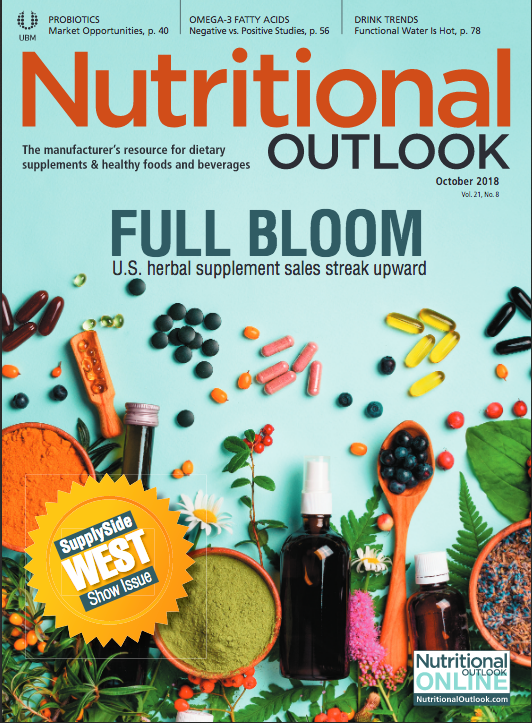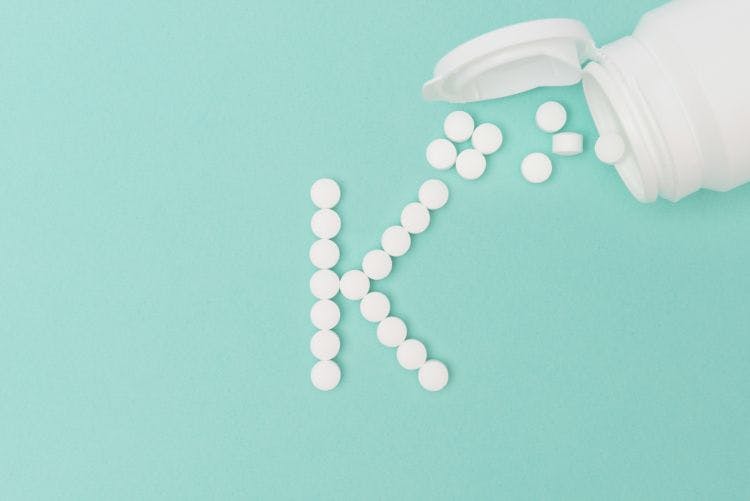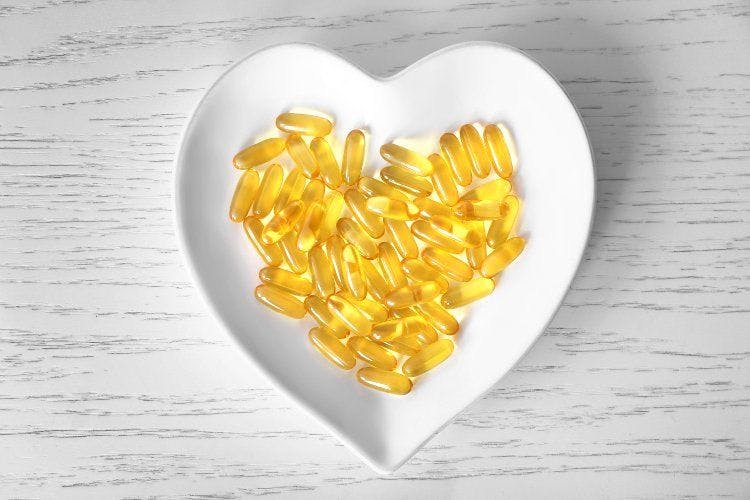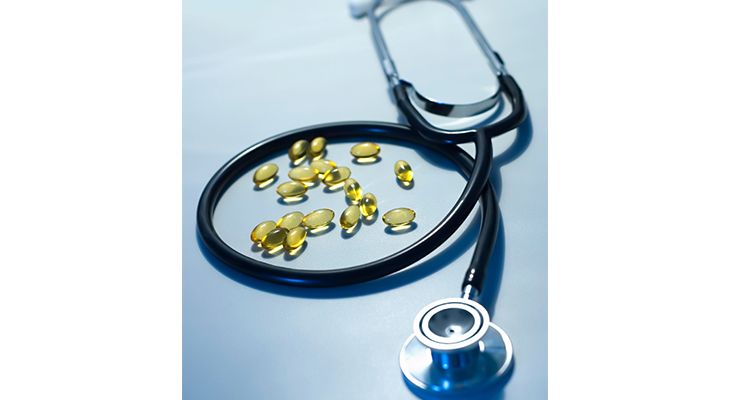U.S. herbal supplement sales are breaking records. Here’s why.
The convergence of contemporary science and a passion for all things “natural” has shot herbal and botanical dietary supplements onto center stage.
Photo © Shutterstock.com/j.chizhe
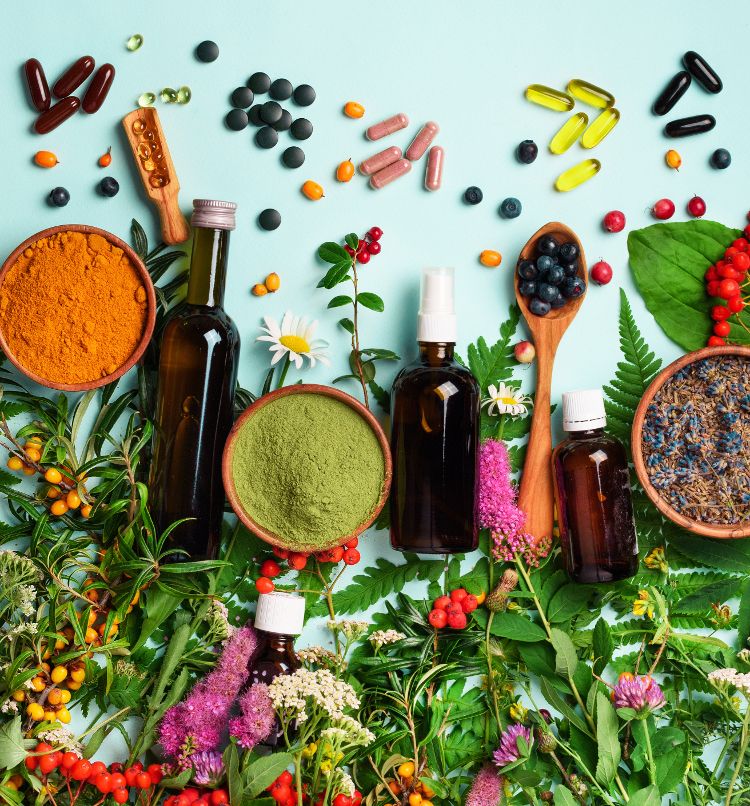
In the annals of “What’s Old Is New Again,” you would be hard-pressed to find a better case study than herbal and botanical ingredients. For despite the fact that these plant parts and preparations thereof have been…er, rooted in traditional medical systems for millennia, the convergence of contemporary science and a passion for all things “natural” has shot herbal and botanical dietary supplements onto center stage not only with consumers, but with brands and health professionals, too.
Consider that while SPINS (Chicago) measured 4.2% growth in overall U.S. vitamin and supplement sales for the 52 weeks ending July 15, 2018-$14.6 billion, total-a zoom-in on herbal formulas and singles reveals even greater growth of 21.5% and 8.8%, respectively. Combined, herbal formulas and singles brought in $1.7 billion in sales during the tracking period, per SPINS.
And fresh off the press in September came the annual HerbalGram Herb Market Report published by the American Botanical Council (Austin, TX), stating that back in 2017, U.S. retail sales of herbal supplements grew 8.5% to over $8 billion. This represents “the strongest U.S. sales growth for herbal supplements in more than 15 years” and the first time sales eclipsed $8 billion. The report combines data from SPINS, market researcher IRI, and Nutrition Business Journal.*
This success comes as no surprise to category watchers. “The trend today is toward simple, basic, pure, and natural,” says Bruce Brown, MPH, MA, president, Natreon Inc. (New Brunswick, NJ). “While many trendy ingredient fads come and go, consumers increasingly put their trust in well-established botanicals that remain solidly steeped in rich traditions.”
But consumers’ trust is by no means inviolable, and the herbal/botanical sector has weathered its share of controversy even recently. Thus, says Brown, “To be successful in the market today, botanical ingredients must meet extremely high standards for quality, safety, and purity.” And they’ll need a track record of scientific substantiation to prove it.
A Debt to the Past
The modern nutrition industry undeniably owes a debt to health practitioners of the past. As Brien Quirk, director of R&D, Draco Natural Products (San Jose, CA), points out, the same herbal and botanical ingredients gaining adherents today “existed in Ayurvedic and Traditional Chinese Medicine for thousands of years, where they painstakingly came up with these formulas to address every conceivable health condition.”
That multiplicity of uses helps explain herbals’ and botanicals’ popularity today. So, too, does their DIY ethos. “The human body has a remarkable ability to overcome illness and disease when given the right nourishment and support,” Quirk points out. “Natural products, especially herbs, are thought to encourage the body to heal itself, with fewer side effects than drugs.”
In an era of widespread “life hacking,” this speaks to our desire to take our health into our own hands. And considering that pharmaceuticals can entail side effects more vexing than the ailments they aim to treat, it makes sense that “more health conditions are being addressed with herbal medicine and functional formulas,” Quirk says.
Add to all this the high cost of healthcare, the prevalence of chronic diseases, and the popularity of plant-based products and you have a recipe for herbal and botanical success. But the real clincher, says Ramon Luna, marketing coordinator, Ecuadorian Rainforest LLC (Clifton, NJ), is the simple fact that we know so much more about herbal and botanical ingredients than we used to. “I believe consumer knowledge is the key proponent of the trend,” he declares. “There are more people now taking an interest in their overall health, and they’re doing research into herbal products as a result.”
Building on Tradition
As are scientists. And their work more than anything else helps legitimize the global herbal and botanical sector, and nudge it toward the $111-billion valuation that Market Research Future predicts it’ll attain by the end of 2023.
After all, says Brown, “Consumers need more than just the knowledge that certain herbs and botanicals have been used effectively for thousands of years. They need hard-hitting scientific evidence to support specific health claims and modes of action.” Building on the ingredients’ longstanding reputation, he says, “Ongoing research continues to validate the evidence for herbal and botanical safety and effectiveness.”
As it does so, it’s building excitement over several marquee ingredients. Principle among them is turmeric (Curcuma longa) and its key active, curcumin. Literally thousands of studies support its antioxidant and anti-inflammatory effects, notes Mariko Hill, product developer, Gencor (Irvine, CA), and that “gives it multiple applications in, for example, nootropic and muscle-recovery formulas.”
Indeed, “Turmeric spans a notable number of herbal segments, and marketing and research efforts align with this growth,” says Kimberly Kawa, retail reporting analyst at SPINS. Two areas of particular dynamism are cleansing and organ support (up 88.2% over the past 52 weeks, per SPINS data) and brain and circulation (up 525.8%-that’s right: 525.8%). But “the lion’s share of turmeric sales,” Kawa says, still come from pain and inflammation supplements, which captured $35.5 million at a 5.2% rate of growth.
“Considering the research connecting health degeneration and chronic inflammation,” Kawa says, “turmeric, or curcumin, makes sense as a functional ingredient targeting the underlying issues that precede a multitude of syndromes of sickness.” And its prospects look even brighter considering its suitability to delivery not only via supplements, but via teas, tisanes, functional beverages, snacks and more.
And it’s gone mainstream. According to the HerbalGram report, U.S. turmeric sales grew 46.7% in the mainstream channel in 2017 to over $32 million, now ranking number five on the list of the year’s top-selling herbal supplements in that channel. In the U.S. natural channel, turmeric retained its number-one ranking in 2017, growing 12.2% to over $50 million, according to the HerbalGram report.
Another botanical with “great growth potential in the context of aging,” says Hill, is fenugreek (Trigonella foenum-graecum). “Fenugreek and its seeds have anabolic and androgenic properties, and numerous clinical studies have shown its ability to displace and use bound testosterone, resulting in muscle growth, strength, and increased sex drive.”
Gencor’s branded fenugreek extract, Testofen, has shown a capacity in studies to increase lean muscle mass and decrease body fat while also promoting a longer health span and lifespan. “This allows fenugreek to be applied to multiple need states,” Hill continues, “whether in sports nutrition, men’s and women’s health, or healthy aging.” According to the HerbalGram report, in the mainstream channel, U.S. fenugreek sales increased 33.5% in 2017 over 2016 to $28.8 million. In the natural channel, growth was more modest, at 2.7%, to $3.9 million.
For his part, Brown calls attention to the class of compounds known as adaptogens-“herbs and botanicals that exert a normalizing effect upon bodily processes and have restorative properties that help the body adapt to stress,” as he puts it. SPINS placed adaptogens atop its list of Top 10 Trend Predictions for 2018, and Brown is particularly bullish on ashwagandha (Withania somnifera).
With origins in Ayurveda, ashwagandha, he says, “has been used since ancient times for a wide variety of conditions and helps support the body in dealing with stressors both internal and external.” It’s especially appropriate in sports nutrition, energy, sleep, heart health, and cognitive health formulas, he adds, because recent human studies-the gold standard in supplement research-substantiate its role in everything from alleviating stress and fatigue to boosting energy and improving concentration.
U.S. sales of ashwagandha in the natural channel grew more than 25% in 2017, hitting $10.6 million according to the HerbalGram report-even though the ingredient did not rank on the mainstream channel’s top-40 list. Innova Market Insights registered an 18% annual growth from 2013 to 2017 in global new product launches featuring ashwagandha. So: watch this space, if you aren’t already.
Finally, as a primary functional ingredient in both herbal formulas and singles, elderberry (genus Sambucus) is “a growth driver, up 59.5% and 91.5%, respectively,” Kawa says. A “superfruit” native to temperate regions of North America and Europe, elderberry is “heavily researched,” she adds, and appears to help the immune system fight viruses. As a result, SPINS research found it among the top ingredients in cold and flu formulas.
HerbalGram reports U.S. elderberry herbal supplement sales as growing 34.7% in the mainstream channel in 2017, to just over $19 million. In the U.S. natural channel during that time, elderberry supplement sales grew 20.6% to $12.5 million. Like turmeric, elderberry’s roster of viable applications-not just supplements but teas and tisanes, syrups, broths, and soups-adds to its desirability with consumers and versatility for formulators.
Learning from the Past
All of the above ingredients-and others still-boast a growing body of research supporting their efficacy. And as Quirk points out, “It almost goes without saying that an herbal ingredient needs strong scientific evidence behind it, especially from human clinical studies.” However, he continues, “A strong track record of safety is also paramount.” Yet even in today’s supplement space, such a record hasn’t always been available.
Within the past decade, sensational stories of unscrupulous manufacturers marketing unsafe or ineffective herbal and botanical products took a toll on the sector and the industry as a whole. But, says Quirk, “with increased regulation implemented through the GMP law, 21 CFR 111, the level of consumer confidence in the quality, safety, and purity of herbals has progressed to a much better place.”
Of course, FDA has its work cut out for it given the mismatch between its surveillance duties and resources for discharging them. But Quirk calls the intra-industry trend toward self-compliance with GMP standards and the voluntary pursuit of certifications from organizations like NSF International and USP “a great development.” (It’s an enlightened one, too, as the appearance of such certifications on a label “do a lot to restore consumer confidence after so many years of negative press,” Quirk says.)
The Real Thing
Also crucial to the category’s future will be the ability to demonstrate unequivocally that the herbal and botanical ingredients in a functional formula are, in fact, what the label says they are. “Unfortunately,” laments Deanne Dolnick, science director, TR Nutritionals (Alpharetta, GA), “wherever we see huge growth in higher-cost botanicals, adulteration pops up.”
Adulteration has been a persistent issue with Ginkgo biloba extract, and now it appears to threaten turmeric, she warns. And yet adulteration is almost an inevitability of an ingredient’s success-the more the market will pay for an ingredient, the more corners some will cut to supply it. And “with botanicals,” Dolnick maintains, “you get what you pay for.”
The upshot is that honest suppliers “who only sell ingredients they can guarantee are free from adulterants” face an uphill battle. “I’ve had countless customers tell me that they’re paying $50 less per kilo for turmeric extract 95% than what we’re offering,” Dolnick says. “Shouldn’t that be a red flag? I would hope so.”
Quirk also believes that identity verification “is still a challenge.” One cause, he postulates, is that testing labs don’t always have access to the specific cultivar that a botanical extract was made from. Further, FDA only requires that the broader genus-species identity-not the cultivar-be established.
“However,” Quirk goes on, “a good number of herbs, fruits, and vegetables have considerable phytochemical variation depending on the cultivar and its source. Because of this, products will often not pass high-performance thin-layer chromatography (HPTLC) identity testing.” Only after testing is complete do labs realize that the cultivar they used as a reference standard didn’t match the cultivar used to make the extract.
One solution Quirk offers would be to set up a system whereby manufacturers provide voucher samples of raw botanical materials-“though this would have to be coordinated with the lab,” he concedes. “We don’t often know when one of our customers submits a sample for testing, and it can be a challenge to obtain the raw voucher from overseas quickly. Properly preserving and importing the sample can also take time. This is a challenge that can only be solved by all of us working together to figure out a workable strategy.”
Tell a Story
Words to live by. But until such a system emerges, don’t discount the power of an origin story to set an herbal or botanical ingredient on a path forward. “Consumers want to know what’s in their supplements, foods, beverages, and personal care products,” Brown says. “They want to know the story behind the ingredients-where they came from, how they’re produced, and even the impact they have on the planet.”
Luna agrees. “Many of the botanicals that I’ve seen grow in popularity have some sort of colorful story behind them,” he says. Sacha inchi (Plukenetia volubilis) is exhibit A. Much of its recent growth owes to studies elucidating the specifics of its nutritional content and bioactivity, Luna says. But marketers “ran with the idea” of sacha inchi, promoting not just its health benefits and applications, but its history in South American culture. “This combination made sacha inchi a well-known ingredient around the world and will likely help drive its growth in the market,” he says.
The lesson: Proven health benefits and assurances of identity and safety are all well and good. But “a rich history for marketers to use in campaigns is one of the telltale signs of future success for a botanical ingredient,” Luna insists.
* Nutrition Business Journal and Nutritional Outlook are both owned by parent company Informa.
